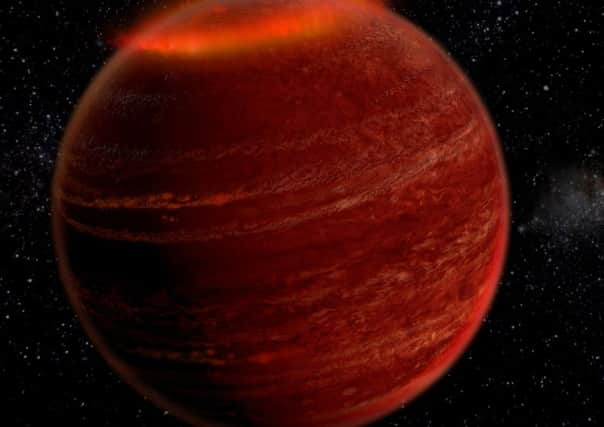Spectacular version of the Northern Lights


It is the first time an aurora, caused by charged particles striking atmospheric atoms, has been spotted outside the solar system.
The astronomical aurora affected the cloudy atmosphere surrounding the “brown dwarf” LSR J1835+3259.
Advertisement
Hide AdAdvertisement
Hide AdA brown dwarf, or “failed star”, is an object more massive than a planet yet too small to trigger the thermonuclear reactions that power stars.
Astronomers made the discovery after combining radio and optical observations of the object, which is 18 light years from Earth.
Its aurora appears to be powered by a little-known dynamo process that also generates the phenomenon on Jupiter. The process is different from the one that drives auroral displays such as the Northern Lights on Earth.
British astronomer Dr Stuart Littlefair, a member of the team from the University of Sheffield, said: “Brown dwarfs span the gap between stars and planets and these results are yet more evidence that we need to think of brown dwarfs as beefed-up planets, rather than ‘failed stars’.
Advertisement
Hide AdAdvertisement
Hide Ad“We already know that brown dwarfs have cloudy atmospheres - like planets - although the clouds in brown dwarfs are made of minerals that form rocks on Earth now we know brown dwarfs host powerful auroras too.”
Lead scientist Dr Gregg Hallinan, from the California Institute of Technology (Caltech) in the US, said: “What we see on this object appears to be the same phenomenon we’ve seen on Jupiter, for example, but thousands of times more powerful.
“This suggests that it may be possible to detect this type of activity from extrasolar planets, many of which are significantly more massive than Jupiter.”
The findings are published in the journal Nature.